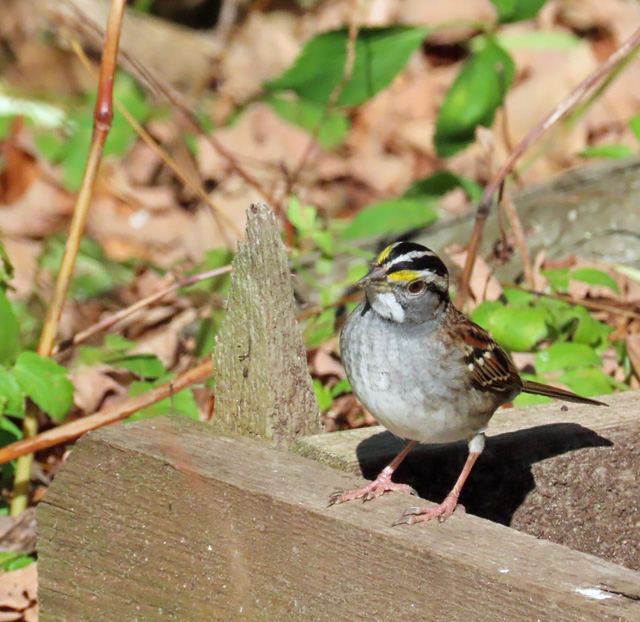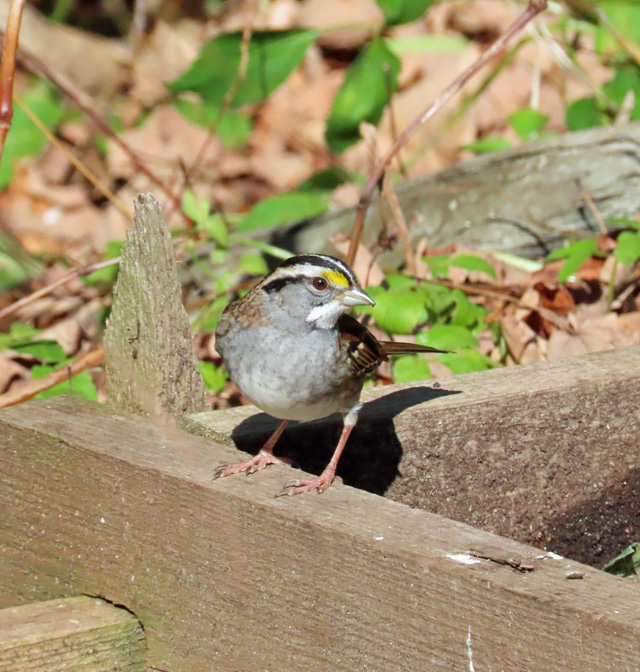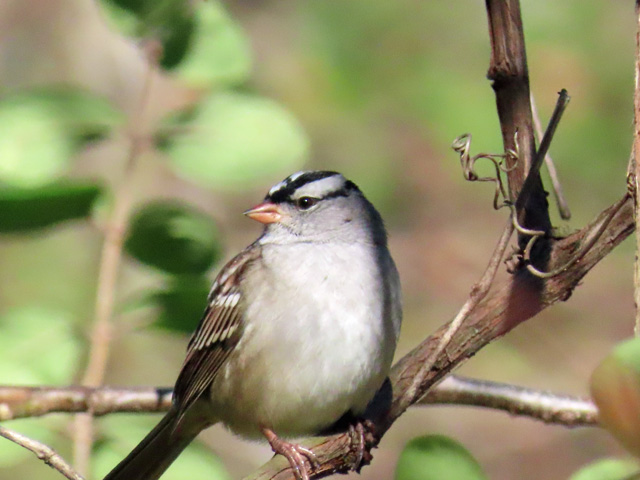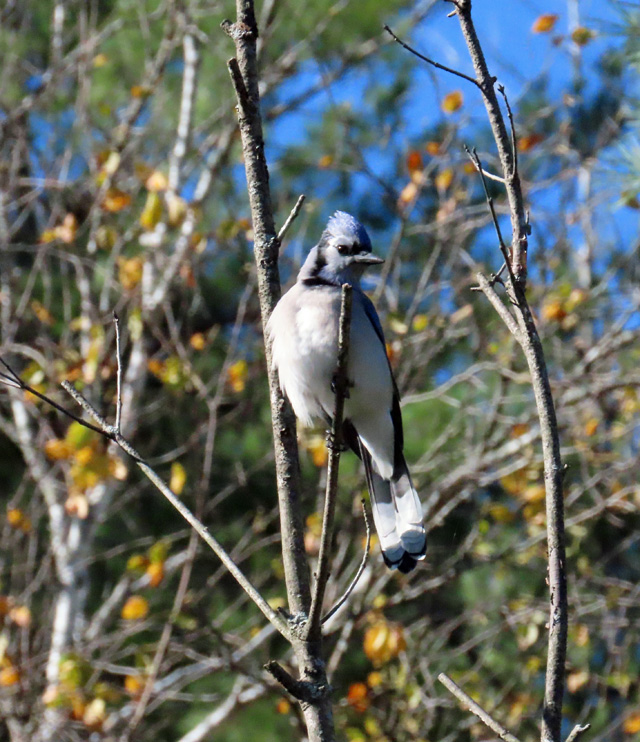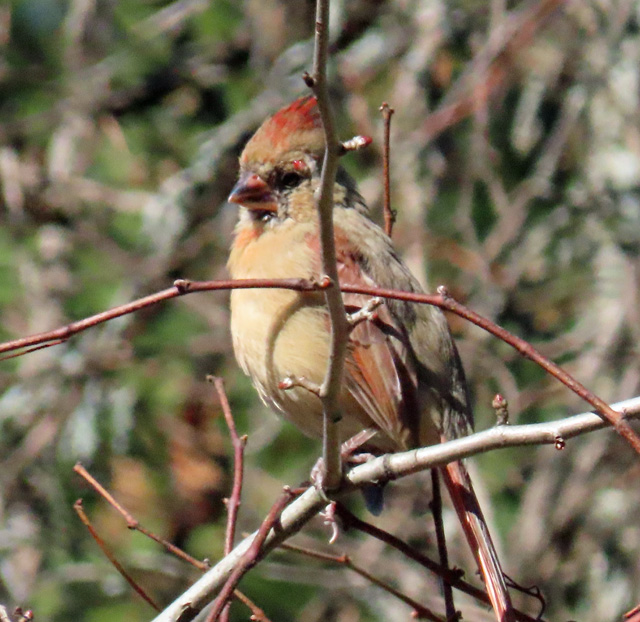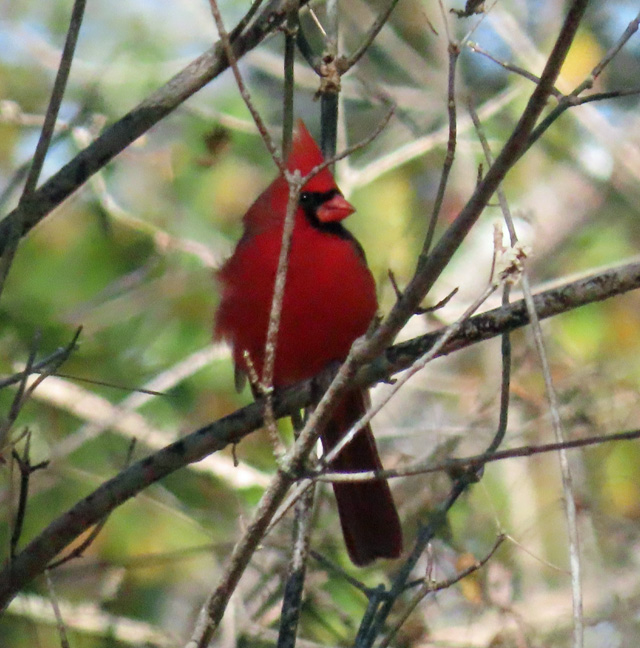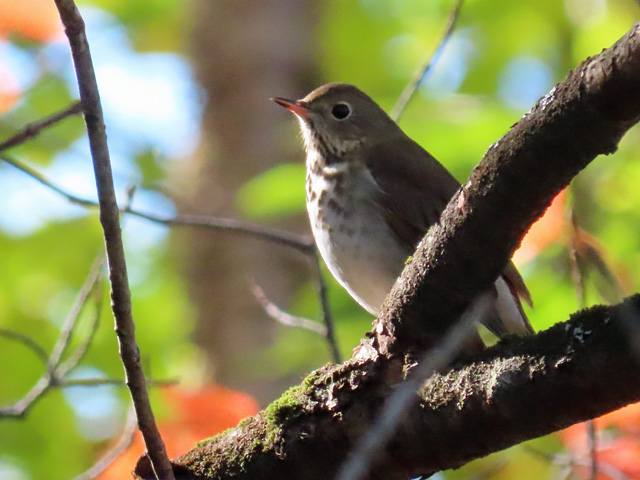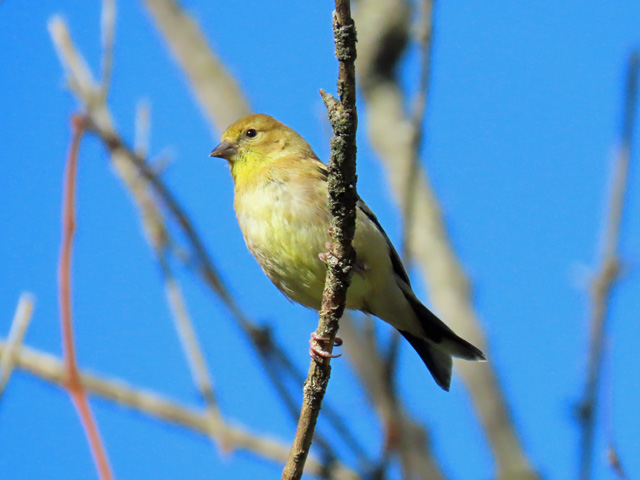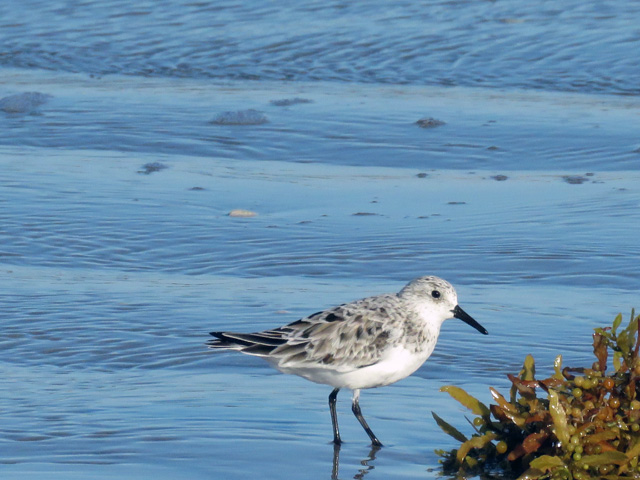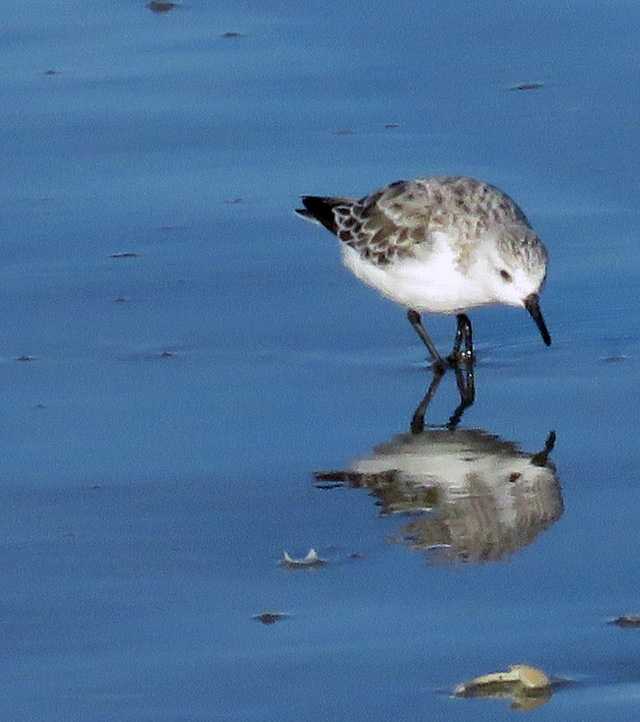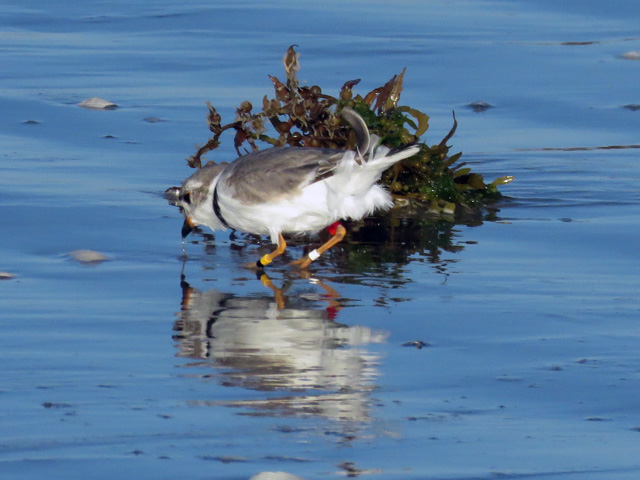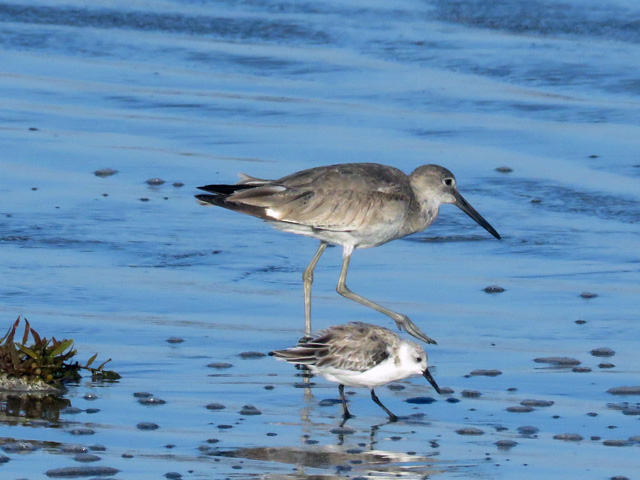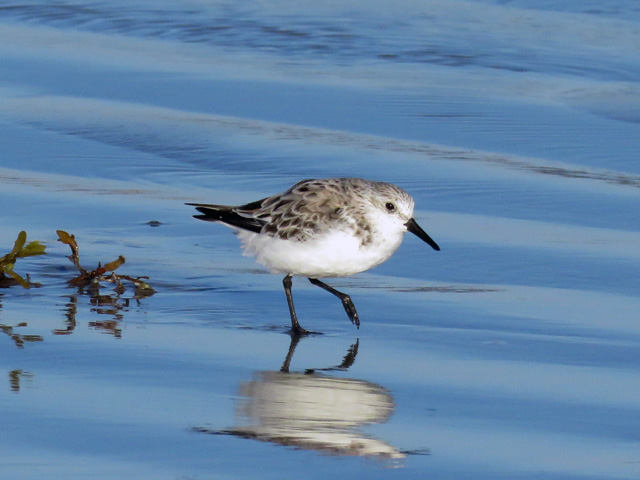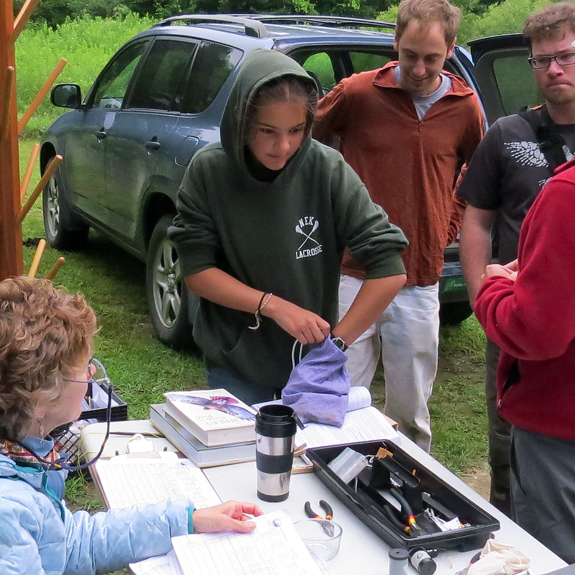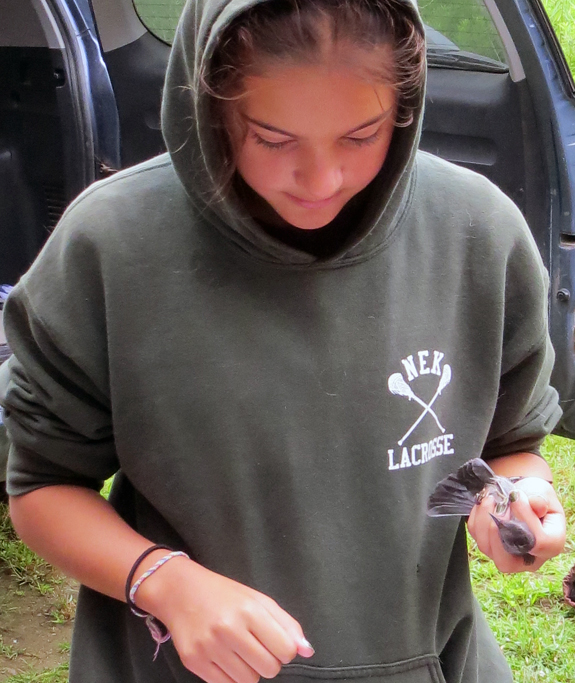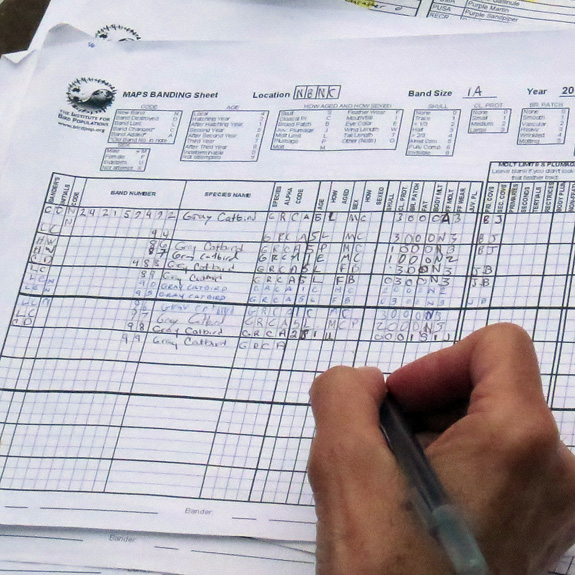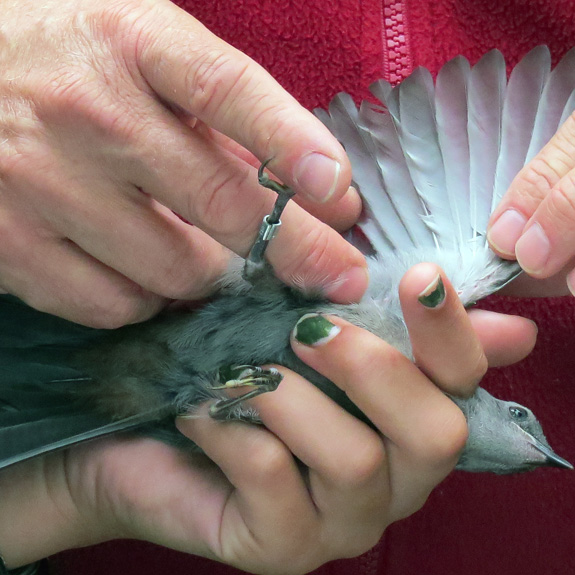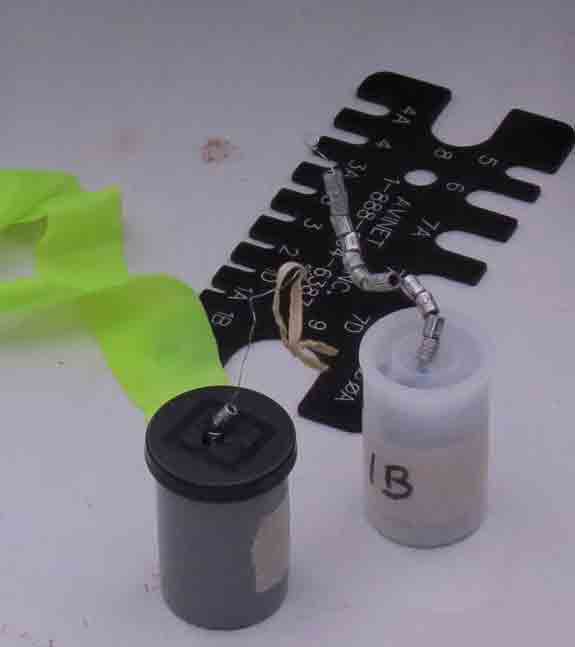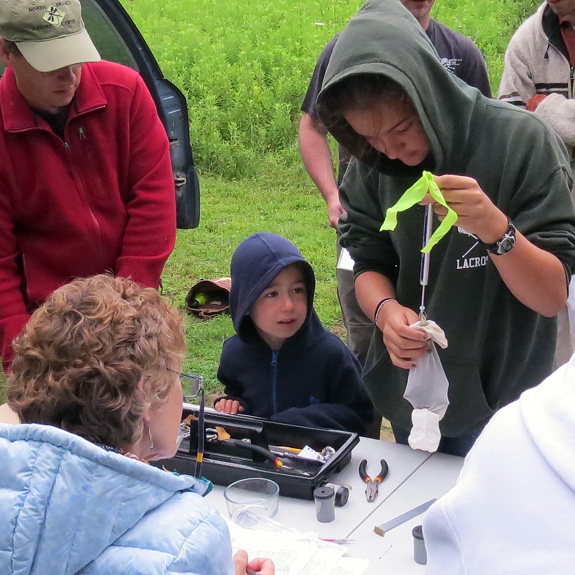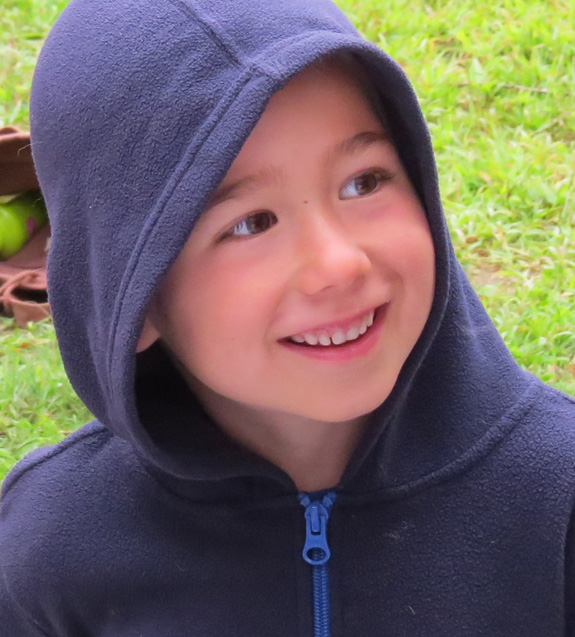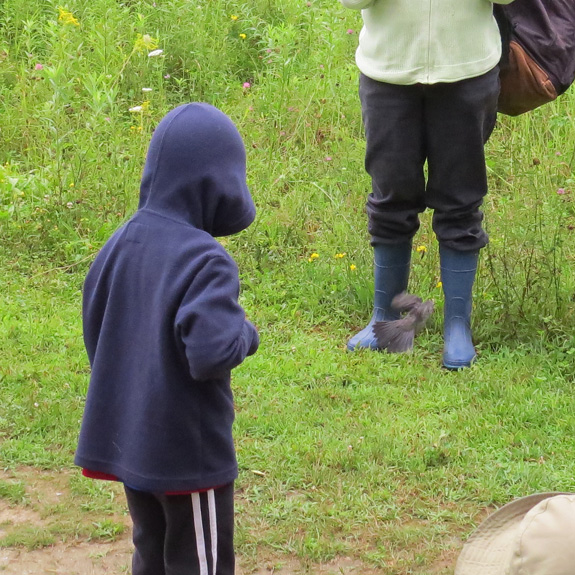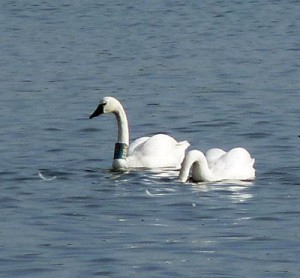This morning, I saw birds being banded for the first time. My friends Chip and Larry from the North Branch Nature Center along with volunteers gather data for the MAPS (The Monitoring Avian Productivity and Survivorship Program). They also use the banding activities to educate both youngsters and oldsters (like this one) to the techniques of bird monitoring.
 |
| Miles finds a Veery in the mist net. |
Larry and Chip unfurled the mist nets about 5:20 A.M. this morning just as the sun was getting ready to rise and soon began catching some of the small birds that hang out along the woods beside the North Branch of the Winooski River. Veerys, Common Yellowthroat warblers, Ovenbirds, a Song Sparrow, and several Gray Catbirds were among the birds caught while I was there. They checked the nets every half hour and carefully extracted the caught birds from the netting, then placing them in cloth bags for safekeeping.
 |
| Larry puts a band on a young Common Yellowthroat |
At the banding table, they gently removed a bird from the bag, using banders grip techniques to look over and document the sex, weight, age of the bird. This was all new to me – to see them blow on the feathers, spread the wings, expose the scalp, and of course, band the bird.
 |
| A young Ovenbird with “bad hair” due to a scalp check by Larry |
The birds were calm in the banders’ hands. The data collected was carefully recorded and then, after a last minute check, the bird was released and flew off a little fluffed up but uninjured.
 |
| Checking for feather wear |
I knew a little about catching birds in nets. I learned a great deal about how you measure and evaluate them and watch with awe the patience and calmness of Chip and Larry as they went through the morning. They both are excellent educators and all along, were explaining and answering questions. The kids were very interested — as were all of us.
 |
| Chip and a Catbird pose before release |
I plan to look for more birding bandings that I can observe. It’s fascinating and can’t help but make you a better birder.
A set of photos are here on Flickr.
